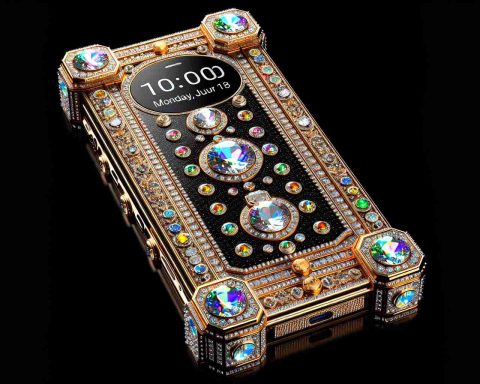In a groundbreaking move, AI has not only revolutionized the creation of art but is now also stepping into the role of a judge. By introducing the concept of an AI Judge, the boundaries between human and artificial intelligence in the art world are being pushed further than ever before. This innovative approach by AI-ARTS challenges traditional notions of artistic evaluation, highlighting the potential for technology to shape our understanding of art.
Utilizing state-of-the-art multimodal AI technologies, the AI Judge assesses submissions on various criteria such as creativity, originality, technical skill, and emotional impact. While acknowledging the inherent limitations of AI in capturing the full depth of the artistic experience, this new judging system offers a fresh perspective on what constitutes meaningful and impactful art in today’s digital age.
The recent winners of the AI-ARTS competition, carefully selected from a diverse pool of global artists, are now proudly showcased on the platform. Through a blend of public voting and expert jury evaluations, these exceptional works represent the cutting edge of AI-driven creativity, foreshadowing a future where human ingenuity collaborates with technological innovation.
For artists looking to explore the intersection of AI and art, AI-ARTS provides a dynamic platform to share their creations and engage with a vibrant community of like-minded individuals. As the art world continues to evolve alongside AI technology, AI-ARTS stands as a beacon of support and recognition for artists seeking to navigate this rapidly changing landscape.
As the 3rd AI-ARTS Competition opens its doors to artists worldwide, the opportunity to showcase AI-generated art and participate in shaping the future of artistic expression has never been more accessible. By embracing AI as a tool for creativity and exploration, artists are invited to push the boundaries of traditional art forms and embrace the endless possibilities that the fusion of human imagination and artificial intelligence can offer.
The Future of Creativity: Unveiling New Dimensions in the Realm of Art and AI
In the ongoing discourse surrounding the convergence of art and artificial intelligence, several pertinent questions emerge, challenging our perceptions and inviting deeper exploration.
1. How does the implementation of AI as a judging entity impact the art ecosystem?
The introduction of AI as an evaluator begs the question of objectivity versus subjectivity in artistic judgment. While AI brings impartiality and consistency to the process, there are concerns about its ability to comprehend nuanced artistic expressions that stem from human experiences and emotions.
2. What are the potential ethical implications of AI assuming a role in artistic evaluation?
Delving into the ethical considerations, the deployment of AI as a judge raises concerns regarding bias, transparency, and the implications of delegating artistic authority to non-human entities. Exploring these ethical quandaries is vital in ensuring a responsible integration of AI in the art world.
One of the key challenges associated with the infusion of AI in artistic judgment is the risk of homogenization and loss of diversity in creative outputs. While AI can analyze vast amounts of data to identify patterns and trends, there is a looming controversy over whether this hampers the individuality and uniqueness that define art.
Advantages and Disadvantages of AI in Artistic Judgment:
Advantages:
1. Efficiency: AI can process and evaluate a large number of submissions swiftly, streamlining the judging process.
2. Objectivity: AI provides an impartial assessment, free from human biases or external influences.
3. Data-Driven Insights: AI can offer valuable data insights on trends and preferences in art, aiding artists in understanding audience preferences.
Disadvantages:
1. Lack of Emotional Intelligence: AI may struggle to grasp the depth of emotional content and context embedded in artworks, leading to potentially skewed judgments.
2. Limitations in Creativity: There are concerns that relying heavily on AI judgment might stifle unconventional and boundary-pushing artistic expressions that defy algorithmic categorization.
3. Depersonalization of Artistic Evaluation: The shift towards AI judgment raises questions about the human touch and subjective engagement that traditional judging processes entail.
In navigating the evolving landscape where AI and art intersect, it is crucial to consider the ramifications, both positive and negative, that this fusion entails. Embracing innovation while safeguarding the essence of creativity and individuality is a delicate balance that demands thoughtful reflection and ethical stewardship.
For further insights on the evolving realm of AI in art, you can explore National Endowment for the Arts, a resource hub that offers perspectives on the intersection of technology and creativity.

















